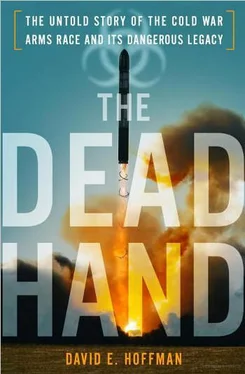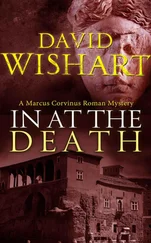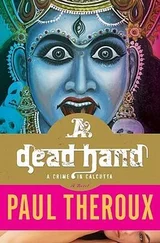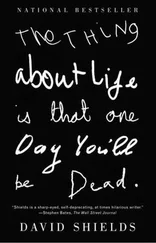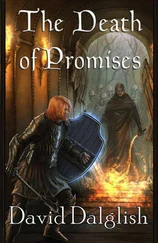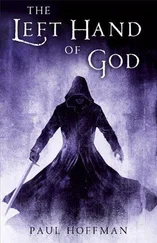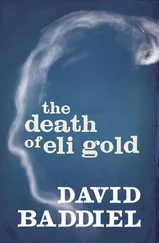Popov vividly recalled working with the guinea pigs. By 1989, the scientists at Obolensk had reached a period of uncertainty. There was less money than before. “It was a frustrating time of disappointment and moral challenge,” he said. “And at that time, I made a commitment to myself. I committed myself to never deal with animal experiments again. The trigger was my last huge experiment with guinea pigs. Something like a few hundred guinea pigs had been held in a containment facility. I and my colleagues visited them every day. Wearing space suits, we fed the survivors and took out the dead. I was very shocked with how it went. Nothing new, but it was unpleasant. Absolutely unpleasant.
“I just couldn’t stand any more the conditions the animals were held in. We saw animals dying, awfully, starving, experiencing paralysis and convulsions in conditions neglecting the very sense of life. The agent paralyzed half of the animal’s body. I did not want to be involved in this any more.” 36
————— 15 —————
THE GREATEST BREAKTHROUGH
Vladimir Pasechnik was reserved, diffident and modest, but his face brightened when talk turned to science. In a photograph taken in the 1980s, when he was an institute director in Leningrad, he was wearing a corduroy jacket, glancing up from his desk, creases across his forehead, his hair receding, eyes inquiring, one hand holding down a notebook or journal. Born in 1937, Pasechnik lost both his parents in the siege of Stalingrad. He had overcome many obstacles to study as a physicist, and graduated at the top of his class at the Leningrad Polytechnic Institute. But the sacrifices of the war left a deep scar on Pasechnik, and he was determined to use his science for peaceful purposes. After graduation, he became a researcher at the Institute of Higher Molecular Compounds in Leningrad, attracted by the chance to create new antibiotics and treat diseases like cancer. 1In 1974, one of Pasechnik’s professors was asked to recommend a young researcher for a special assignment. Pasechnik was selected to set up a new scientific research facility, the Institute of Ultra Pure Biological Preparations in Leningrad. 2It seemed a promising opportunity—the new institute would have resources for the best equipment and could attract the finest talent. He took the job, and in the years that followed he demonstrated ability as a talented and strong-willed manager. By 1981, the institute had become one of the most advanced microbiology facilities in the Soviet Union. It was also part of Biopreparat, the secret Soviet biological weapons machine. Pasechnik later told people that it was about this time that he realized the research could not be just for defensive purposes, as he originally believed, but was for offensive weapons.
While Domaradsky and Popov attempted to modify the genetic makeup of pathogens, Pasechnik’s mission was more practical: to optimize the pathogens for use in combat, and to build superefficient industrial methods to produce them. If anthrax or other agents were to be deployed in wartime, they needed to be manufactured in large batches, remain stable, survive dissemination into the air and be effectively dispersed. Pasechnik’s job was to find ways to prepare and manufacture the pathogens so they could be weaponized without losing effectiveness and virulence. Working with models of the deadly agents, he sought to master the complex process of how to concentrate the pathogens and turn them into aerosols. 3
Soviet biological weapons builders were bedeviled with complications. Before being deployed as an aerosol, a pathogen must be mixed in a proper “formulation,” with the addition of chemicals and other substances, specific for each germ. If done correctly, it will maintain the pathogen’s virulence or toxicity while in storage or in the weapon. But if done incorrectly, the agents may die or lose their power. They can also clog nozzles or clump up inside a weapon, which would make it ineffective, or they can be neutralized by the environment once disseminated. Also, they can face other complications that render them ineffective, such as the anthrax spores killed by phage lysis bacteria in Stepnogorsk. Moreover, it was essential to keep the particles small, to penetrate deep into the lungs of the victims. According to U.S. estimates, the ideal size is one to five microns; a micron is one-millionth of a meter. If larger, they would be filtered out by the upper respiratory tract before reaching the lungs; larger particles also settle out of the air more quickly. However, Biopreparat and the Soviet military produced agents up to twelve microns, knowing that, even if they did not reach the lungs, they would still infect the victim once trapped inside the body in the upper respiratory tract. 4
One of Pasechnik’s most important inventions was a “milling” machine that used a powerful blast of air to turn batches of dried agent into a fine powder. He also developed new methods of microencapsulation—covering the tiny particles containing the infectious agents in polymer capsules to preserve and protect them from ultraviolet light. Pasechnik frequently accompanied the officers from the 15th Main Directorate of the Defense Ministry when they visited the research institutes. Popov recalled that Pasechnik sat in the front row, writing everything down in his notebooks.
Alibek, then first deputy director of Biopreparat, recalled in his memoir how he had once spent a long, tiring day in Leningrad with Pasechnik, going over projects at the institute. “Pasechnik seemed sad and a bit depressed as he drove me to the railway station, where I planned to catch the overnight train back to Moscow. I asked him if anything was wrong. Posing such a personal question to a man like Pasechnik was risky. He was one of our senior scientists, twelve years older than me, and he had always been somewhat aloof. I worried that he might take offense.”
“Can I be honest with you,” Pasechnik replied. “It’s like this. I am fifty-one years old, and I am going through a strange time in my life. I don’t know if I have accomplished what I want to. And they’re going to make me retire soon.” Alibek knew that fifty-five was the mandatory retirement age in Biopreparat, but recalled that he clapped Pasechnik on the shoulder and told him not to worry. “Four years is a long time, and they could be your best years!”
Pasechnik smiled thinly, Alibek said. 5
But this conversation did not even begin to reveal the depth of Pasechnik’s despair. According to those who knew him and later spoke with him, Pasechnik had found it increasingly difficult to justify his work devoted to weapons. Each year, the tasks assigned to him by the military were more demanding, as they sought still more virulent and effective agents and ever-larger industrial capacity for producing them.
Foremost among his tasks, Pasechnik worked on creating models of a plague agent that would be resistant to antibiotics. If the models worked, they could easily be adapted for the real Yersinia pestis . His dream of working on a cure for cancer was fading. His promise to himself to use science for peaceful goals was unfulfilled. His personal crisis was profound. Pasechnik felt trapped, and began to plan an escape.
In October 1989, Pasechnik went to France on a business trip to purchase laboratory equipment. Alibek had approved the trip and forgotten about it. While in France, Pasechnik received a message to return for an urgent meeting of all Biopreparat institute directors in a few days’ time. Pasechnik told a colleague traveling with him to go on ahead, he would follow the next day. When the colleague arrived back in Moscow, alone, he found Pasechnik’s wife waiting at the airport—and she was surprised Pasechnik was not on the plane. In Paris, Pasechnik walked to the Canadian Embassy, knocked on the door and announced that he was a scientist at a secret biological weapons laboratory in the Soviet Union and wanted to defect. The Canadians shut the door in his face. Pasechnik felt desperate. He feared going to the United States or Britain, thinking either country might force him to go back to work on biological weapons. But with few options left, he reluctantly called the British Embassy from a phone booth and repeated that he was a Soviet germ weapon specialist and wanted to defect.
Читать дальше
